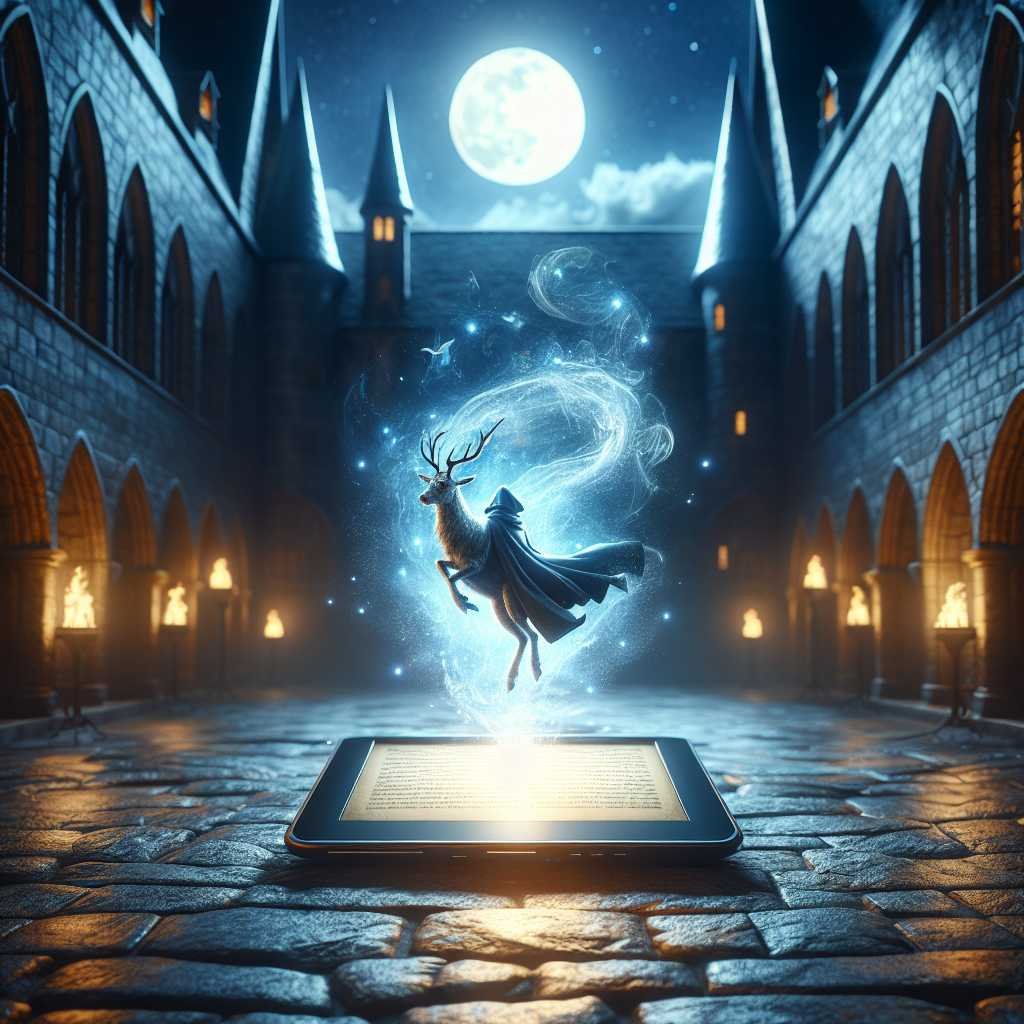Harry Potter and the Prisoner of Azkaban (Kindle Edition): Why This Darker Chapter Still Casts a Spell
Stuck between childhood whimsy and teenage grit, Harry Potter and the Prisoner of Azkaban is the turning point where the series deepens, darkens, and becomes unforgettable. Think of it as the Knight Bus of the saga: loud, unexpected, a little unhinged—and exactly what you need when the night feels long. If you’re deciding whether to dive in on Kindle, or you’re wondering what makes Book Three so beloved, you’re in the right place. Let’s step aboard.
Here’s the promise of this guide: a spoiler-light look at the story’s magic and momentum, a practical breakdown of what’s great about the Kindle edition, and a few smart buying tips so you get the version that fits your reading life. Along the way, we’ll also highlight themes that make this book a lasting favorite—from time and memory to fear and courage—and point you to credible sources for deeper exploration.
A spoiler-light refresher: Knight Bus, Dementors, and a name that haunts
Prisoner of Azkaban opens with cinematic energy. After an explosive incident on Privet Drive (if you know, you know), Harry is scooped up by the Knight Bus—emergency transport for witches and wizards in distress—and hurtles toward another year at Hogwarts. But something is different this time. Sirius Black, a convicted mass murderer and supposed ally of Voldemort, has escaped Azkaban. The Ministry is panicked, the wizarding world is on edge, and whispers point in one direction: Harry.
At school, Harry grapples with more than homework. Dementors—horrifying prison guards that feed on hope—patrol the grounds. He faces a boggart, masters the Patronus Charm, and tries to decode what really happened the night his parents died. The year’s biggest surprises unfold in the Shrieking Shack, where friendship, loyalty, and identity all collide in one breathless sequence. Ready to revisit Azkaban on your e-reader? Check it on Amazon.
For a bite-sized dive deeper into lore—Dementors, Patronuses, and more—the official Wizarding World site is a great starting point, and the British Library’s Harry Potter collection offers fascinating background on the series’ creation.
Why Prisoner of Azkaban stands out in the series
Here’s why many readers (myself included) call this the best of the early books.
- A tonal shift that works: Book Three is where the series grows up. Humor still cracks through—think Marauder’s Map shenanigans—but the stakes feel real. Dementors are more than monsters; they’re lived metaphors for depression and trauma, making the story emotionally resonant without losing its pace.
- A masterclass in structure: J.K. Rowling layers clues so that the finale feels both surprising and inevitable. The Time-Turner isn’t just a prop; it’s a device that retrofits the entire plot with meaning. That’s the kind of elegant plotting that makes a re-read rewarding.
- Friendship as power: This is the book that reframes who Harry’s allies are and what they mean to him. The reveal connected to the Marauders is a gut-punch of backstory that reframes earlier books and foreshadows the war to come.
- Character growth you can feel: Hermione’s arc in particular shines—fierce, overcommitted, and brave—and Lupin arrives as the kind of teacher every reader wishes they had: compassionate, steady, and quietly formidable.
If you’re someone who cares about story craft, this novel invites analysis without ever becoming homework. It thrills and moves in equal measure, which is why so many readers still call it their favorite.
The Kindle experience: what changes, what improves
Kindle gives you the freedom to carry Hogwarts in your pocket, but there’s more going on than convenience. Reading Prisoner of Azkaban on Kindle (or the Kindle app) amplifies key parts of the experience:
- X-Ray and search: Forgot who a side character is, or the last mention of “Azkaban”? X-Ray (where available) and universal search let you jump to character bios and find every reference fast. It’s ideal for catching foreshadowing on a re-read.
- Adjustable typography: Larger fonts, line spacing, and margins reduce eye strain. Late-night readers will love dark mode, and the clean, distraction-free layout helps the story breathe.
- Whispersync for Voice: If you also grab the Audible edition, Whispersync keeps your place across reading and listening. That means you can read on your commute and switch to audio while cooking, without losing your spot.
- Highlights and notes: Kindle makes it easy to save favorite moments, jot down theories, or mark passages for a book club without dog-earing your physical copy.
- Instant access: No shipping, no wait. As soon as the mood strikes—Knight Bus style—you’re inside the story.
Want the seamless X-Ray and Whispersync experience I mentioned? See price on Amazon.
If you’re new to digital reading, Amazon’s overview of the Kindle app features and Whispersync is useful for understanding what carries over across devices.
Who will love this Kindle edition
Short answer: almost everyone, but especially these readers.
- The busy commuter: Short chapters and brisk pacing make it perfect for stolen reading windows on trains or during lunch breaks.
- The annotator: If you love highlighting motifs or tracking a theme—time, memory, identity—the Kindle note system turns your copy into a living study guide.
- The returning fan: If you grew up with the series, Kindle’s search and X-Ray let you rediscover (and appreciate) all the echoing details you might have missed years ago.
- New readers and younger teens: Adjustable fonts and built-in dictionary support make tricky words or lore easier to navigate, easing the way for first-time readers.
If you’re stocking up for a re-read marathon, you can Buy on Amazon in under a minute.
Five moments you’ll want to revisit
No major spoilers here—just the beats that stick in your memory and reward a second look.
- The Knight Bus arrival: A chaotic, funny, and slightly terrifying gateway from the Muggle world to wizarding chaos.
- The first Dementor encounter: Fear becomes physical, and the story’s darker heartbeat begins.
- Lupin’s lessons: Defense Against the Dark Arts is finally taught by someone who understands both monsters and people.
- The boggart class: A lesson in fear that says a lot about each character, wrapped in a memorable set piece.
- The Shrieking Shack revelations: A cascade of truth that reorients everything you thought you knew.
These scenes aren’t just plot. They’re touchstones for the series’ evolving tone—still playful, but undeniably haunted.
Buying tips: Kindle vs paperback vs illustrated editions
If you’re choosing the best format for your shelf (or your backpack), a few practical pointers will help.
- Kindle (eBook):
- Best for commuters, note-takers, and re-readers who want fast search and adjustable fonts.
- Typically lighter on the wallet and instant to download.
- Great for overnight travel and reading in bed (hello, dark mode).
- Paperback:
- Tactile, affordable, and easy to lend.
- Perfect if you like to see your shelf grow with each installment.
- Less portable if you’re minimizing bag weight.
- Hardcover or Collector’s Edition:
- Durable and gift-worthy.
- Higher cost and larger size, but it feels luxurious for home libraries.
- Illustrated Edition (if/when available for Book Three in your region):
- Gorgeous art, ideal for family reading and visual learners.
- Heavier and more expensive, with a slower reading pace that invites savoring.
For specs-minded readers, check that your device supports X-Ray and Whispersync, look at file size if storage is tight, and confirm region availability; not all features appear in every country’s storefront. Comparing formats and features before you decide? View on Amazon for full specs and customer notes.
If you prefer third-party context, the British Library’s essays on the series offer historical and literary framing you won’t find on retail pages.
Reading guide: themes and discussion sparks
Bring these to your book club or keep them in mind while you read—they unlock deeper layers without ruining the fun.
- Time and consequence:
- The Time-Turner episodes explore cause, effect, and ethical choices. What would you change if you could? What should you never change?
- Fear as a teacher:
- Dementors embody hopelessness; the Patronus represents a disciplined, cultivated joy. What memories would you choose to fight the dark?
- Chosen family:
- Lupin, Sirius, and the Marauders shift our understanding of who stands with Harry. How does the series redefine “family” as it progresses?
- Justice and truth:
- The book’s climax asks whether institutions always get it right. Where does justice live when systems fail?
- Identity under pressure:
- Several characters carry secrets about who they are. How does hidden identity shape their choices—for good and for harm?
Use Kindle highlights to tag moments that speak to these themes, then export your notes for a quick discussion sheet later.
The film vs the book: complementary experiences
Alfonso Cuarón’s film adaptation is a stylistic leap that mirrors the book’s tonal shift—moody skies, a watchful camera, and a Hogwarts that feels lived-in. Still, the book provides richer context for character motivations and the mechanics of time travel. If you loved the movie, the novel deepens everything you admired on-screen. And if you haven’t seen it yet, reading first gives the story room to surprise you.
For character lore and post-release reflections, the official Wizarding World archive occasionally publishes insights and interviews that add texture.
Accessibility and comfort: why Kindle can be kinder
Reading comfort matters. If you struggle with small type or eye strain, Kindle’s customization is a game-changer. Adjust font family (including dyslexia-friendly options on some devices), bump up the size, and toggle dark mode in low light. For readers with attention challenges, the lack of visual clutter helps you sink into the narrative. Here’s why that matters: Prisoner of Azkaban’s momentum builds chapter by chapter; comfortable reading keeps you in the current.
Prefer to sample a chapter before committing? Shop on Amazon to download a free preview.
Content notes and age guidance
Prisoner of Azkaban introduces darker elements—Dementors, traumatic memories, and a pervasive sense of threat—but it does so with sensitivity. Most readers find it suitable for ages 9–12 and up, though temperament matters more than age. If you’re reading with a younger child, consider buddy-reading the Dementor scenes and discussing how fear and hope interplay. The Patronus, after all, is a powerful, kid-friendly metaphor for resilience.
For parents and educators, the Wizarding World educator resources and broader literacy guides can help frame discussions around empathy, bravery, and justice.
Practical perks: travel, re-reads, and staying organized
Let me be real: The third book is a re-read magnet. The finale reframes earlier chapters, and the breadcrumbs become more obvious when you go back. Kindle makes that loop easy. Create a notebook of theories, tag every mention of the Marauder’s Map, or search “Patronus” to watch Harry’s mastery evolve in real time. If you juggle multiple reads, collections help you keep the Wizarding World tidy alongside your other genres.
Ready to keep all your magical adventures in one place while you travel light? See price on Amazon.
FAQs
Q: Is the Kindle edition illustrated?
A: The standard Kindle edition is text-focused. Some versions may include small decorative elements, but for full-page artwork you’ll want the illustrated print editions when available.
Q: Does Prisoner of Azkaban on Kindle support Whispersync with Audible?
A: In many regions, yes—you can purchase the audiobook separately and enable Whispersync to switch between reading and listening while keeping your place. Check the product page for your storefront to confirm.
Q: What age is this book appropriate for?
A: Most guides suggest ages 9–12 and up. However, the Dementors and darker tone can be intense for sensitive readers; consider reading alongside younger kids and discussing the heavier moments.
Q: How long does it take to read?
A: Average readers typically finish in 7–10 hours. Kindle’s reading progress and “time left in chapter” features help you plan sessions.
Q: Do I need to read Books One and Two first?
A: It’s strongly recommended. While Prisoner of Azkaban is gripping on its own, the emotional stakes and character payoffs land best if you’ve read the first two books.
Q: How different is the book from the movie?
A: The movie captures the tone but streamlines details. The book offers deeper character motivations, clearer mechanics for the Time-Turner, and richer backstory for the Marauders.
Q: Are there regional differences in Kindle features?
A: Yes. Features like X-Ray or Whispersync may vary by country and device. Check your local Amazon storefront’s product details to verify.
The takeaway
Harry Potter and the Prisoner of Azkaban is where the series grows its heart and its edge. On Kindle, it becomes even more accessible, searchable, and re-readable—ideal for savoring craft, annotating themes, and carrying your Patronus in your pocket. If you’re rebuilding your magical library or diving in for the first time, this edition balances convenience with immersion. Keep exploring the series, revisit the clues, and if this review helped, consider subscribing for more smart, reader-first guides to beloved books and the best ways to read them.
Discover more at InnoVirtuoso.com
I would love some feedback on my writing so if you have any, please don’t hesitate to leave a comment around here or in any platforms that is convenient for you.
For more on tech and other topics, explore InnoVirtuoso.com anytime. Subscribe to my newsletter and join our growing community—we’ll create something magical together. I promise, it’ll never be boring!
Stay updated with the latest news—subscribe to our newsletter today!
Thank you all—wishing you an amazing day ahead!
Read more related Articles at InnoVirtuoso
- How to Completely Turn Off Google AI on Your Android Phone
- The Best AI Jokes of the Month: February Edition
- Introducing SpoofDPI: Bypassing Deep Packet Inspection
- Getting Started with shadps4: Your Guide to the PlayStation 4 Emulator
- Sophos Pricing in 2025: A Guide to Intercept X Endpoint Protection
- The Essential Requirements for Augmented Reality: A Comprehensive Guide
- Harvard: A Legacy of Achievements and a Path Towards the Future
- Unlocking the Secrets of Prompt Engineering: 5 Must-Read Books That Will Revolutionize You






